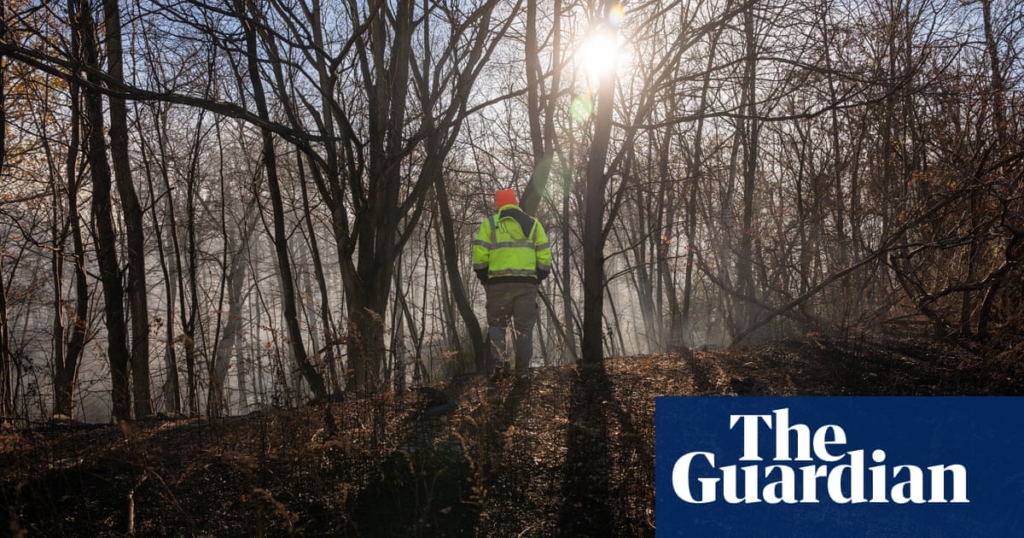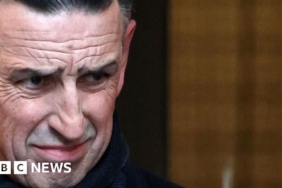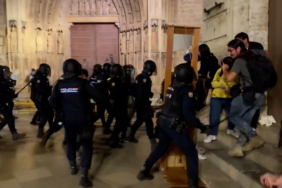Bu içerikte, New York ve New Jersey’de devam eden orman yangınları ve bölgedeki tarihi kuraklık hakkında bilgi verilmektedir. Bölgedeki düşük yağış miktarı ve yüksek rüzgarlar nedeniyle yangınların yayılma riski artmaktadır. Bu durum, yerel halkın su kullanımını azaltmaları gerektiğini vurgulamaktadır. Ayrıca, yangınlar nedeniyle bazı can kayıpları yaşanmıştır ve şehirlerde yangınlarla mücadele devam etmektedir. İklim krizi, yangın mevsimlerinin daha uzun ve yoğun hale gelmesine neden olmaktadır. Ayrıca, kuraklığın tarım üretimine ve su kaynaklarına etkileri üzerinde de durulmaktadır. Yangın mevsimlerinin değişen hava koşullarıyla başa çıkabilmek için toplumun uyum sağlaması gerektiği belirtilmektedir.
[ad 1]
Kaynak: www.theguardian.com
Wildfires continue to ravage parts of New York and New Jersey, fueled by high winds and record low precipitation and, despite some rain over last weekend, there is no immediate relief in sight for the historic drought in the region, with ongoing dry conditions exacerbating the risk of spreading fires.
Last month was the driest on record in New York City, with only 0.87in (2.2cm) of rain compared with the historic average of 4.12in for October, and forecasts predict the deficit between normal levels of rain and this autumn in the region will grow before the end of the season.
The state of New York is currently under a burn ban and a drought watch, meaning that residents and businesses are encouraged to reduce their water usage.
“We’re seeing extreme weather manifest itself,” said Zach Iscol, New York City’s commissioner of emergency management. “It’s important that we start conserving water now.”
Earlier this week, New Jersey declared a drought warning, with mandatory water conservation issued in parts of the state and limiting all non-essential water usage like outdoor watering.
The total water usage by over 8 million New Yorkers amounts to about a billion gallons a day. The last time New York City experienced a drought was over 20 years ago, lasting from 2001 to 2003, with the city’s water storage dropping below 42% during the worst of it. As of Thursday, the city’s water reservoir levels were sitting at around 62%, compared with typical 79%.
Firefighters are continuing to battle the Jennings Creek wildfire that broke out last Saturday and scorched nearly 5,000 acres in both states, killing at least one person. Dariel Vasque, an 18-year-old parks and recreation aide with the New York state parks department, was killed last Saturday while battling the blaze.
Dense, urban areas are not spared from the ongoing bush fires. New York City saw more than 229 brush fires in the two week period between 31 October and 12 November. Officials are still investigating the fire that burned 2 acres of Prospect Park in the borough of Brooklyn last Saturday, and on Thursday fire officials contained a 4-acre (1.6-hectare) fire in Manhattan’s Inwood Hill Park.
“It is a more extreme fire season that we’ve had in recent history,” said Capt Scott Jackson, a forest ranger for the New York department of environmental conservation, at a press conference on Monday.
New York state generally has two major fire seasons, a larger one in spring and a more abbreviated autumn season.
“We did have a relatively light spring fire season this year, so I think we’re making it up for it in the fall,” Jackson said. “That’s the time when we have a lot of dead leaves off the trees, and grass on the ground, so you get that sunlight direct to the ground to dry out those forest fuels.”
Wildfire seasons are getting longer and growing more intense, especially across the western United States, according to analysis by non-profit Climate Central. The climate crisis is shifting weather patterns, with warming temperatures and drier air increasing wildfire risks across the country.
after newsletter promotion
“We have seen a little increase in how early and late the seasons are going,” Jackson said. “So far, the changes are occurring at a slow enough rate that I think we’re adapting to those changes as they happen.”
Farmers across New York and New Jersey are bracing for the impact of the drought on crop production and water resources.
“I feel like it’s still the early days, and we haven’t seen the worst of it yet,” said Emily Eder, farm director at Poughkeepsie Farm Project. “We’d usually be watering our crops with just a small amount of rainfall, instead we’re moving irrigation around, which we typically wouldn’t this time in the season.”
Eder said that although the region had experienced unusually warm temperatures and record low rainfall for several months, some people were starting to realize the full extent of the drought only recently.
“A lot of us have had interactions with people where we’ll talk about how it hasn’t rained in so long and people will say: ‘Oh, really, I didn’t even notice,’” Eder said. “It’s this sort of semi-invisibility of climate change, despite the fact that these disasters are happening. There’s still a level of it that a lot of people are not seeing and those who work with the land and rely on it for their living are really seeing.”





Yorumlar kapalı.